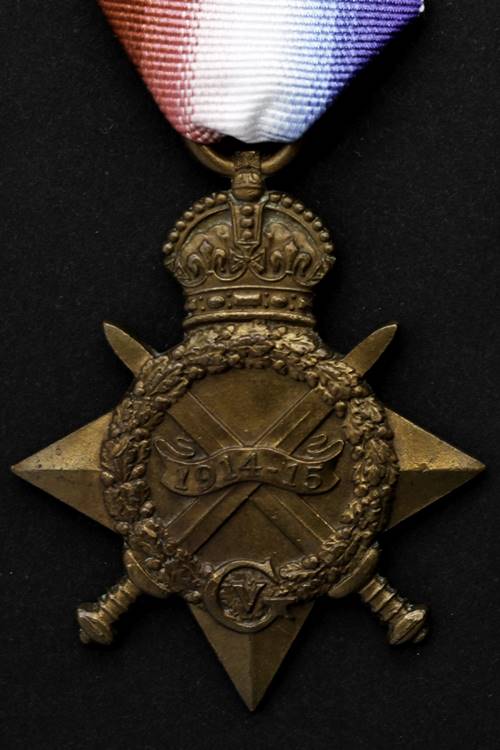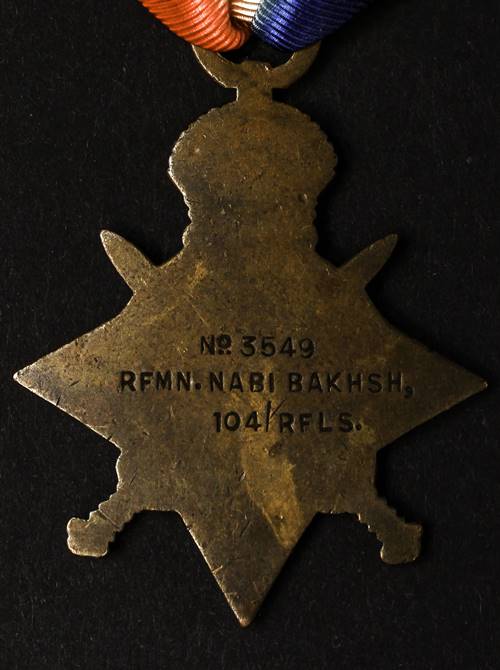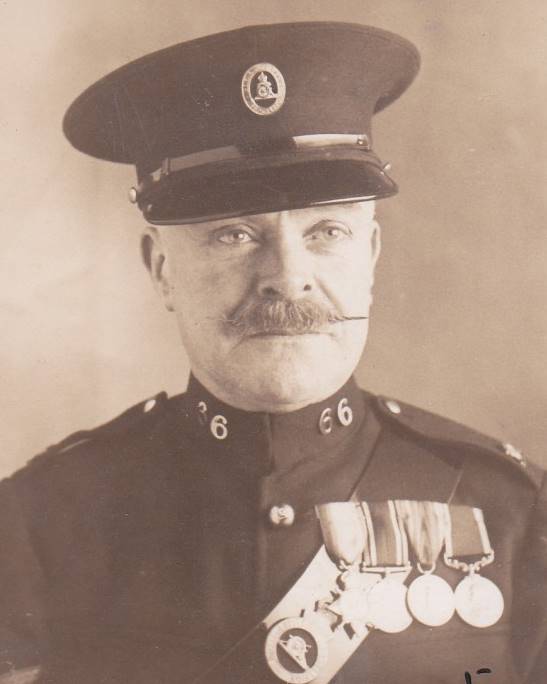This article is about the 1914-15 Star and will explain how a soldier qualified for the medal, provide a description and help you to find 1914-15 Star records. I have also written articles about the other campaign medals of the First World War and a variety of guides to helping you research soldiers who served in the British Army during the war:
The 1914-15 Star
In 1919, Army Order 20 announced the award of another campaign medal, the 1914-15 Star. To qualify for this medal, a soldier had to serve in a theatre of war between 5 August 1914 and 31 December 1915. However, if a soldier had served in France and Belgium between 5 August and midnight on 22/23 November 1914, they qualified for the 1914 Star instead. You could not be awarded both medals. The 1914-15 Star was never awarded on its own as once a soldier qualified for the medal they automatically qualified for the British War Medal and Victory Medal.
A soldier could qualify for the 1914-15 Star through service in a wide variety of theatres of war across the globe. While soldiers usually qualified for the medal due to service in France, Egypt or Gallipoli, they could also qualify if they fought at the Siege of Tsing-Tau in China, took part in the occupation of Togo or in one of the many expeditions on the North West Frontier of India. A complete table of 1914-15 Star theatre of war codes is included at the bottom of this page.
Description of the 1914-15 Star
Obverse: A star surmounted by the Imperial Crown and crossed by two swords. The medal has a single scroll which contains “1914-15”. The royal cypher of King George V, “GV” is below, resting on a laurel wreath which encircles the scroll.
Reverse: Plain, with the recipient’s details impressed.
Size: Height 62 mm and width 44 mm.
Metal: Tombac Bronze (92% copper, 8% zinc).
Naming: Impressed in block capitals on the reverse. There are a variety of naming styles but they should all be impressed rather than engraved.
Number Issued: Approximately 2,366,000.
Designer: William Henry James Blakemore.
1914-15 Star Records
There are two documents which record the award of a 1914-15 Star to a soldier who served in the British Army during the First World War, their Medal Index Card and Medal Roll for the 1914-15 Star. The Medal Index Card should record the date a soldier qualified for the medal and the theatre of war they first served in. The date of entry is very important as by comparing it toa unit’s war diary, you’ll be able to work out if the soldier went abroad with the unit or was a later draft. There is often a slight discrepancy between the embarkation and the date a soldier qualified for the 1914/15 Star. If in doubt, check other Medal Index Cards to soldiers of that unit.
A soldier who qualified for the 1914-15 Star will have a Medal Roll entry for the medal and a separate Medal Roll recording the British War Medal and Victory Medal. Medal rolls are very important as they usually recorded the exact units a soldier served with abroad. Unless a soldier served with the Royal Engineers, Army Service Corps, Royal Artillery etc rather than the infantry. This will be crucial information for researching a soldier if their service record has been destroyed. Both these sets of records are available on Ancestry and viewing the Medal Index Card is usually free.
1914-15 Star Theatre of War Codes
The codes below were usually recorded on the bottom left-hand corner of a Medal Index Card next to “Theatre of War first served in” and above “Date of entry therein”. The most frequently encountered code is 1 for Western Europe.
Theatre of War Code
Theatre
1
Western Europe
2
Balkan Theatre
a
Greek Macedonia Serbia and Bulgaria
b
Gallipoli and Aegean Islands
3
Egyptian Theatre
4
African Theatre
a
British East Africa German East Africa Rhodesia Nyasaland and Uganda
b
German South West Africa
c
Kamerun (Cameroon)
d
Togoland
e
Caprivi Zipfel Rhodesia
5
Asiatic Theatre
a
Mesopotamia and Bushire
b
South West Arabia
c
Aden
d
Muscut
e
Seistan
f
Tochi Valley
g
Hafiz
h
Katlang Rastam and Swat
i
Landekai Ridge
j
Perim
k
Kalat
l
Katchin Hills
m
Tsing-Tau
6
Australasian Theatre
a
German New Guinea
b
Nauru
c
German Samoa
The 1914-15 Star in Photographs
The photograph below is my ancestor, Charles Bryant, who served with the Royal Horse Artillery during the First World War. Charles was wearing a 1914 Star, British War Medal, Victory Medal and Long Service and Good Conduct Medal. Unless the photograph is very clear or was taken close to the medal, then it is usually impossible to tell the difference between the 1914-15 Star and 1914 Star in photographs. If a soldier qualified for the 1914 Star then there is a good chance that they also qualified for the clasp and this does show up clearly on the medal’s ribbon. However, many soldiers who qualified for the clasp did not actually attach it to their 1914 Star. The reason I know that Charles was wearing a 1914 Star is due to finding his Medal Index Card which recorded his medal entitlement.



